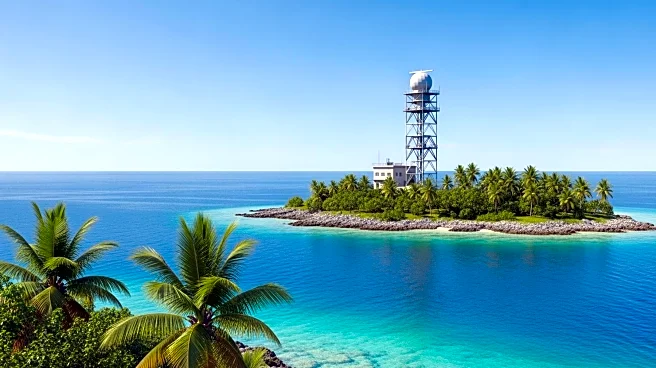What's Happening?
Lonely Planet has released its 'Best in Travel 2026' guide, highlighting 25 must-visit destinations and experiences for the upcoming year. The list includes a diverse range of locations such as Theodore
Roosevelt National Park in North Dakota and Maine in the United States, as well as international spots like Botswana, Peru, and Jeju-do in South Korea. The guide also features unique experiences such as food tours in Old Dubai and Kerala, India, and rapid-rafting the Colorado River in the Grand Canyon. The selections are part of Lonely Planet's effort to provide travelers with curated itineraries through its new travel-planning service, Lonely Planet Journeys.
Why It's Important?
The release of Lonely Planet's travel guide is significant as it influences travel trends and destinations for the coming year. By highlighting lesser-known locations and unique experiences, the guide encourages travelers to explore beyond traditional tourist spots, potentially boosting local economies and promoting cultural exchange. For the U.S., featuring destinations like Theodore Roosevelt National Park and Maine can increase domestic tourism, supporting local businesses and conservation efforts. Internationally, the guide's recommendations can lead to increased tourism in featured countries, fostering economic growth and cultural awareness.
What's Next?
As travelers begin planning their 2026 vacations, destinations featured in Lonely Planet's guide may see an uptick in interest and bookings. Travel agencies and tour operators might develop new packages to cater to the highlighted experiences, while local governments and businesses in these areas could prepare for increased tourist activity. Additionally, the focus on unique and sustainable travel experiences may encourage more environmentally conscious tourism practices, aligning with global efforts to promote sustainable travel.
Beyond the Headlines
The emphasis on unique and culturally rich experiences in Lonely Planet's guide reflects a growing trend towards experiential travel, where tourists seek meaningful and immersive experiences rather than traditional sightseeing. This shift could lead to long-term changes in the travel industry, with more emphasis on sustainable and responsible tourism. Furthermore, the guide's inclusion of diverse destinations highlights the importance of cultural diversity and heritage in travel, potentially fostering greater global understanding and appreciation.












